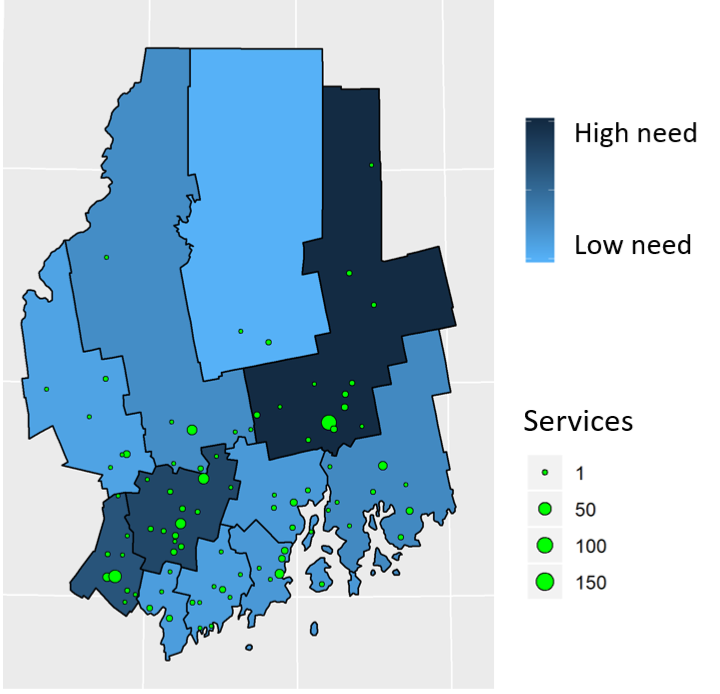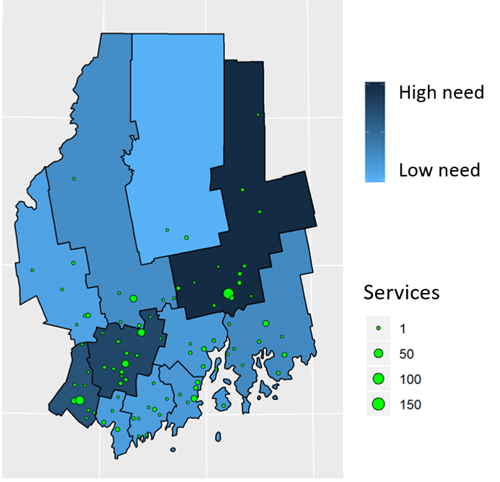Using Data to Select the Right Evidence-Based Practices (EBPs)

The Family First Prevention Services Act (FFPSA) includes expanded federal funding for evidence-based1 prevention services through Title IV-E for:
- Mental health prevention and treatment
- Substance use disorder prevention and treatment provided by a qualified clinician
- In-home parent skill-based programs, including parenting skills training, parent education, and individual or family counseling
Data can be a powerful tool for states to identify and implement the right EBPs. Below, you will find a four-step process that states can follow to select EBPs that might meet their needs:
-
Identify the Target Population(s), or the intended service recipients:
- What unfavorable trends are occurring with foster care entries, lengths of stay, outcomes, or costs, that could be addressed?
- What are the characteristics of children and families associated with these trends, such as children entering care, staying in care for a long time, or entering residential placements?
- What is the geographic location of these children and families?
For example, some states have noticed an increase in very young children entering foster care due to parental substance use disorder. Families with these characteristics could be defined as the target population, and their locations could be mapped.
-
Assess the Target Population(s) Needs:
- Quantitative data collected from a statewide information system can inform specific program needs (e.g., opioids vs. illicit drugs, multi-generational families vs. single-parent households, etc.).
- Qualitative data can provide an invaluable “on-the-ground” perspective from workers and families on the front lines. Families could provide additional perspective (through focus groups, interviews, and/or surveys) regarding barriers to accessing services, and the efficacy and impact of those services.
Ideally, this needs assessment would be aspirational in nature; that is, it would consider the needs in the context of all EBPs, not just those currently offered or being considered.
-
Assess System Capacity:
- The state agency will also want to compile or collect data about the current service array (through surveys, focus groups, and/or administrative data) regarding:
- the array of services they provide
- the model(s) used for providing those services
- the populations served by each service program
- the geographic service area
For EBPs, it is also important to understand the extent to which each provider adheres to the program model and can reliably report on outcomes for youth in the program. Maintaining program fidelity can be one of the most significant challenges of sustaining EBPs.
-
Tie it all Together
- Geographic areas with a high proportion of a target population can be matched to the current service array, to identify areas well-met by services being provided, including areas with existing EBPs, and gaps where enhancing capacity or addressing service needs is warranted (example in Figure 1).


Figure 1. Example of a map that overlays need level with the availability of services2
With this information, the state can begin to analyze the cost benefit of expanding current EBPs or implementing additional EBPs, that would meet the target population’s needs appropriately.
_________________________________________________
1 The Administration for Children and Families (ACF) is conducting independent, systematic reviews of certain prevention services, to determine if they meet the promising, supported, or well-supported criteria, required in FFPSA.
2 The data displayed in the map is not real – it is for demonstration purposes only.
For more information, please e-mail Karen Hallenbeck, Manager, at khallenbeck@pcgus.com.
